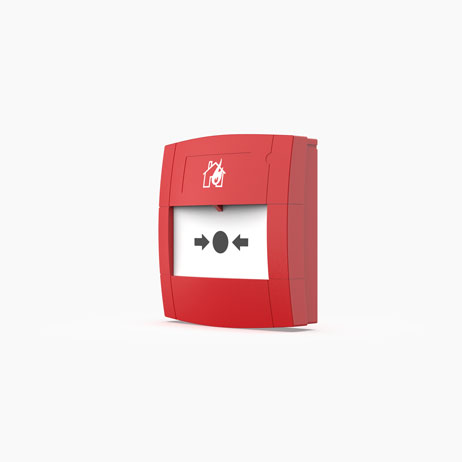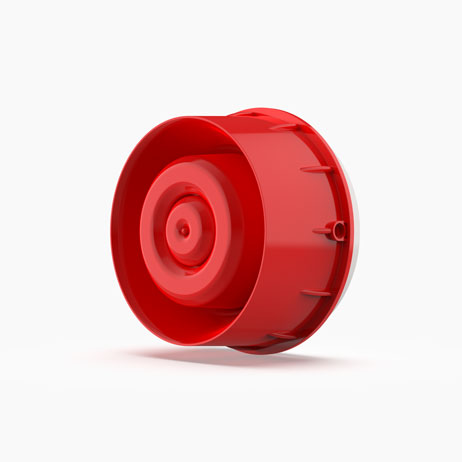Healthcare facilities – such as hospitals, clinics and surgeries – play a critical role in delivering medical care to the public. These environments often operate 24/7, house vulnerable individuals, and contain high-value equipment and complex infrastructure.
From small GP surgeries to large acute hospitals, each facility presents unique fire safety challenges due to patient mobility issues, medical gas storage and the need for uninterrupted care.
Fire detection systems in these settings must balance rapid response with minimal disruption, ensuring both life safety and continuity of essential healthcare services.
Risks
Healthcare facilities face a range of fire risks due to their complex operations and equipment. Some of these include:
- Electrical Equipment
- Hospitals rely heavily on powered medical devices. Faulty wiring, overloads or ageing equipment can easily spark fires.
- Kitchen Areas
- On-site kitchens for staff and patients pose typical cooking risks, especially with unattended appliances or grease build-up.
- Medical Gases
- Stored oxygen and other flammable gases can rapidly accelerate fire spread if leaks occur or cylinders are damaged.
- Laundry Facilities
- Heat build-up in dryers, combined with lint accumulation, can easily ignite in busy on-site laundry areas.
- Human Error
- Accidental misuse of equipment, careless smoking or improper storage of flammable substances can all trigger fire incidents.
Challenges
Designing a fire detection system for healthcare facilities requires careful planning due to their complexity and critical function. Key challenges include:
- Protecting Vulnerable Occupants
- Patients may be immobile or unconscious, requiring advanced warning and staff-led evacuation.
- Avoiding False Alarms
- Unnecessary alarms can cause panic and disrupt critical care. Fire detection systems must be highly reliable and selective.
- Uninterrupted Operation
- Systems must function without interruption and allow for maintenance without affecting patient safety.
- Zoned Evacuation Strategies
- Progressive or phased evacuation requires intelligent zoning and precise alarm control.
- Integration with Other Systems
- Fire detection must interface with nurse call, access control, HVAC and BMS systems for coordinated response.
Morley-IAS Max
The Morley-IAS Max panel is a next-generation, addressable fire alarm control panel designed for medium to large sites requiring high performance and scalability. Certified to EN 54-2, EN 54-4 and EN 54-13, it uses a robust CAN-bus network to link up to 64 panels, supporting as many as 128 loops across a system. Each loop can accommodate up to 99 detectors and 99 modules, with 750 mA loop power to meet the demands of modern devices, including EN 54-23 visual alarm devices.
The panel is available in 1, 2, and 4–8 loop models, with support for System Sensor and Morley-IAS protocols. Its 7-inch colour touchscreen offers intuitive navigation, clear status information and straightforward commissioning. Advanced cause-and-effect logic, Agile wireless integration, extensive event logging and built-in diagnostics make it a reliable choice for complex sites such as hospitals and other healthcare Facilities.
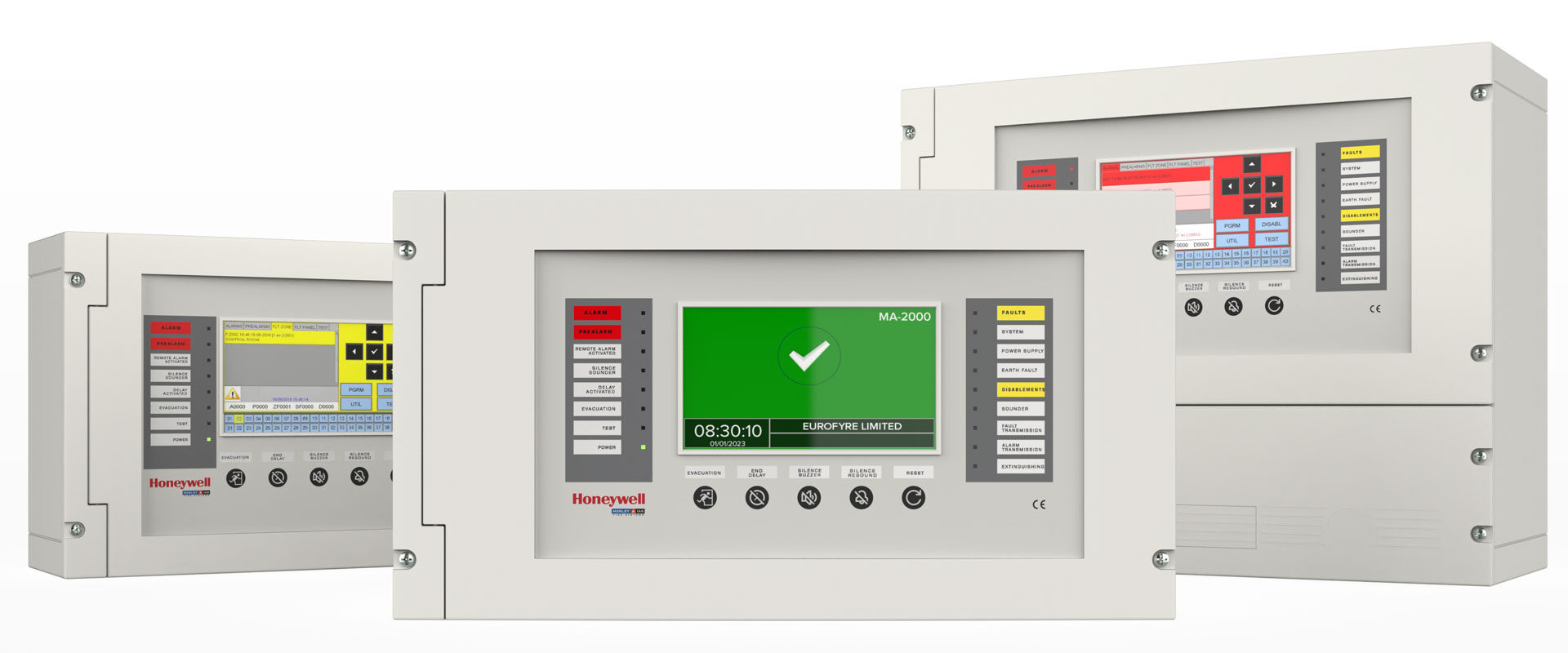
Approvals
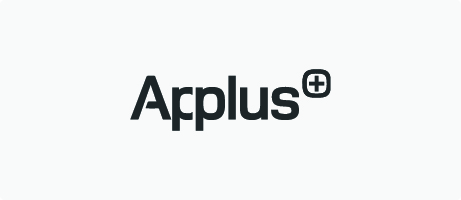

CAN Bus Network
The Morley IAS Max series supports a CAN BUS network feature, allowing multiple panels and devices to communicate seamlessly over a robust, high-speed data link. This enables up to 32 panels to be networked together, sharing event information and control functions across a site. The CAN BUS design ensures reliable, fault-tolerant communication with simplified wiring and reduced installation costs compared to traditional networking methods. It is ideal for medium to large installations, providing scalability, resilience and centralised monitoring while maintaining fast response times for fire detection and alarm management.
User-Friendly Display
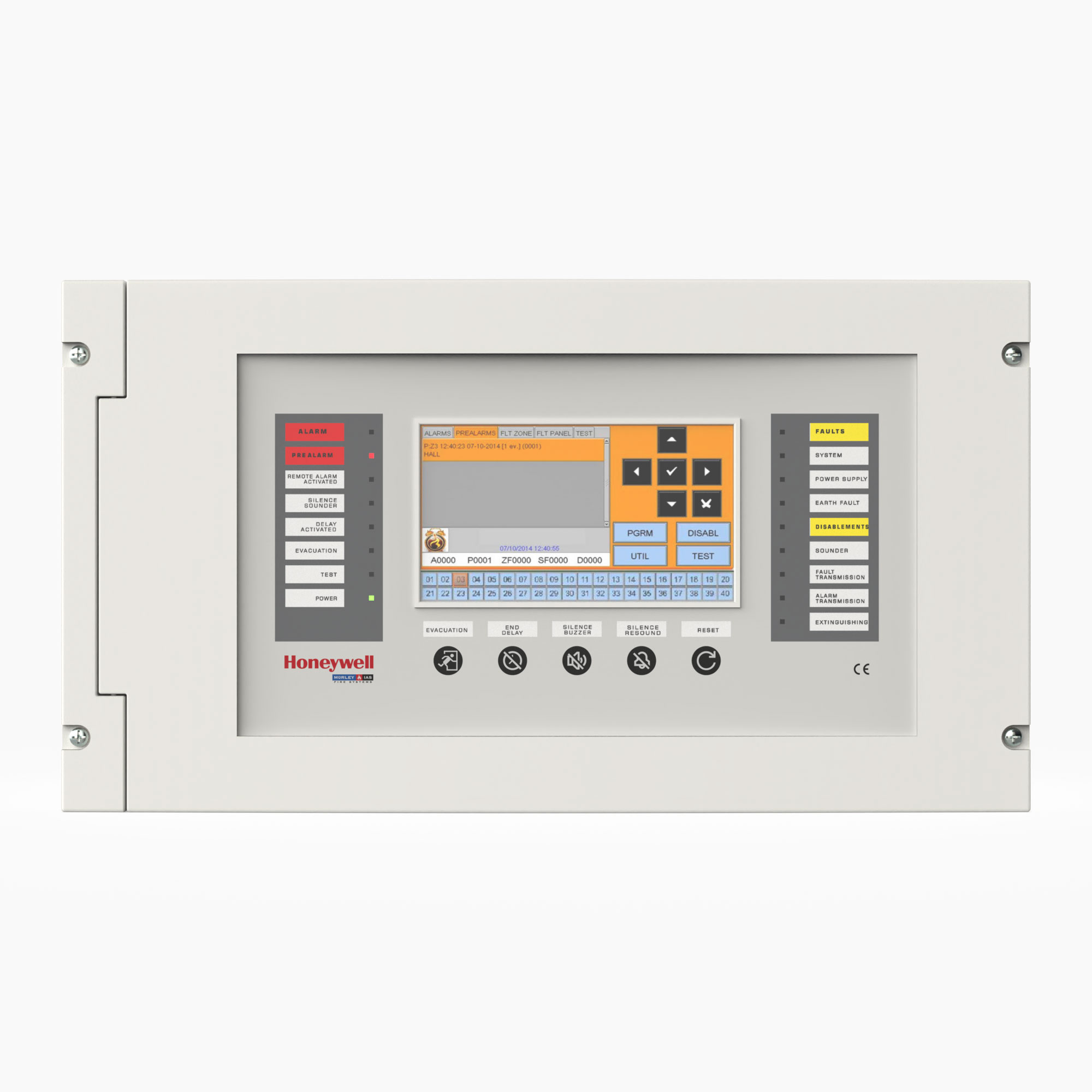
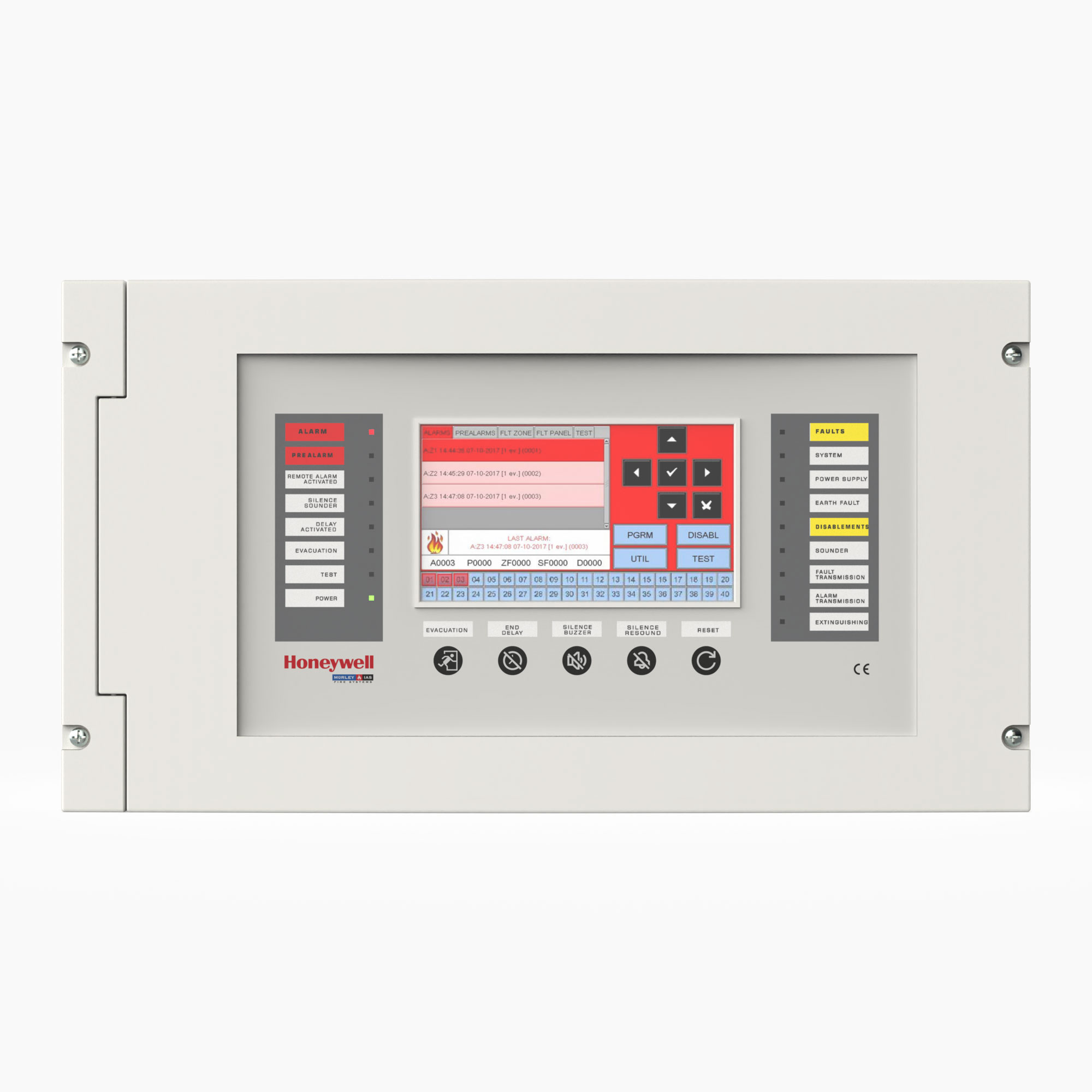
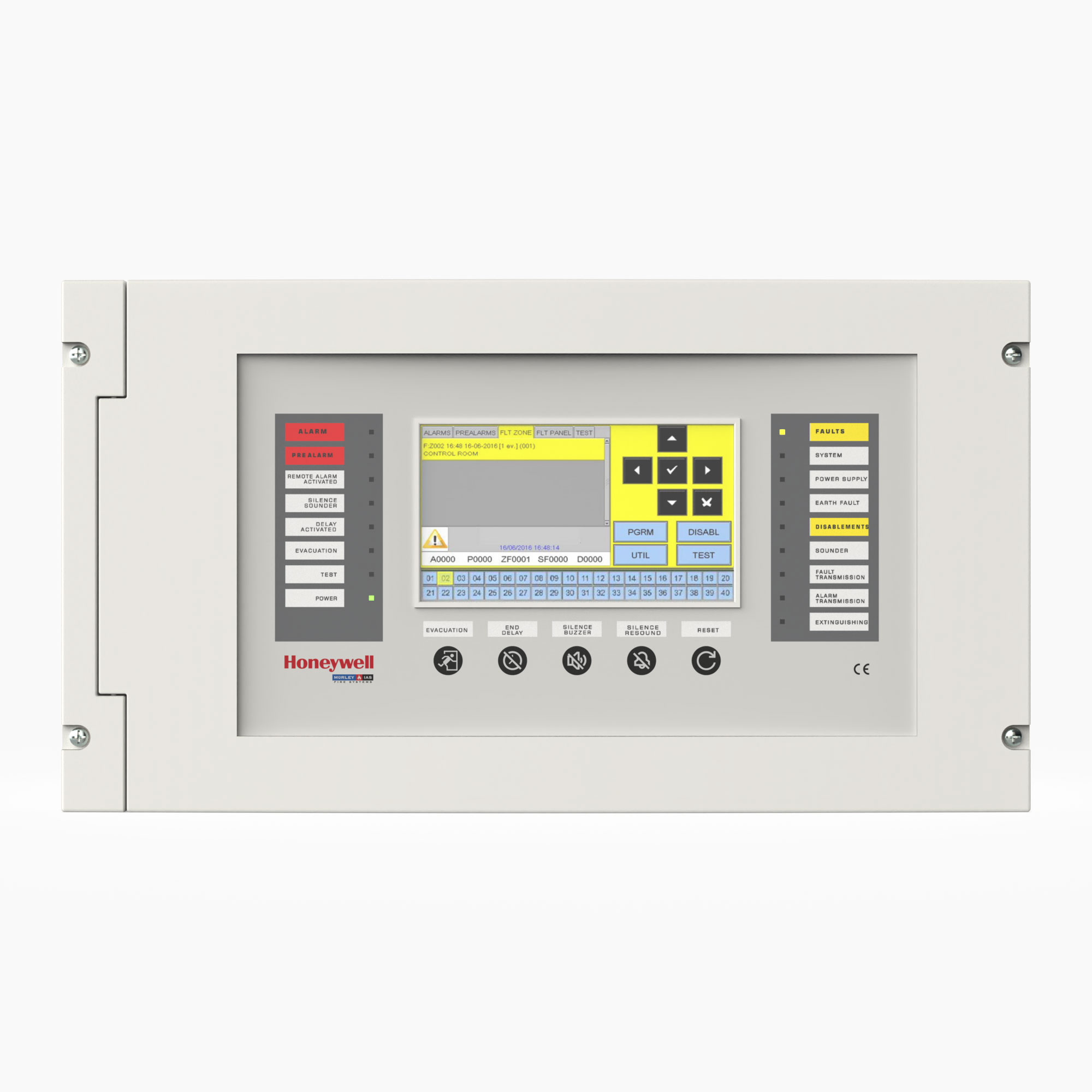
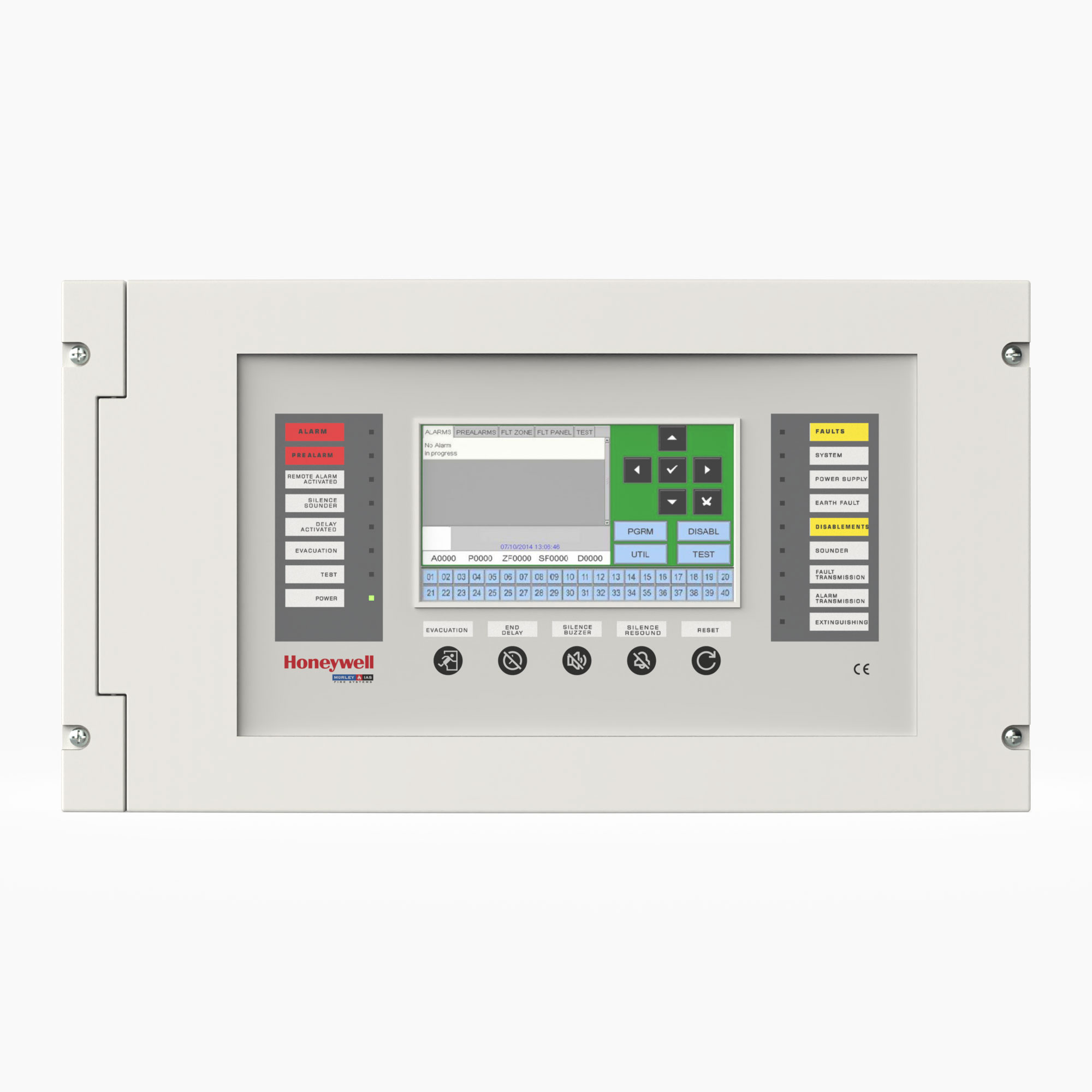
The Morley-IAS Max system uses distinct colours on the touchscreen interface to indicate different system states such as normal operation, fire, fault or disablement. This visual clarity helps staff quickly identify and respond to critical events, reducing response times and improving situational awareness, especially in busy or high-pressure environments like hospitals and clinics.
Design Considerations
Panel Placement
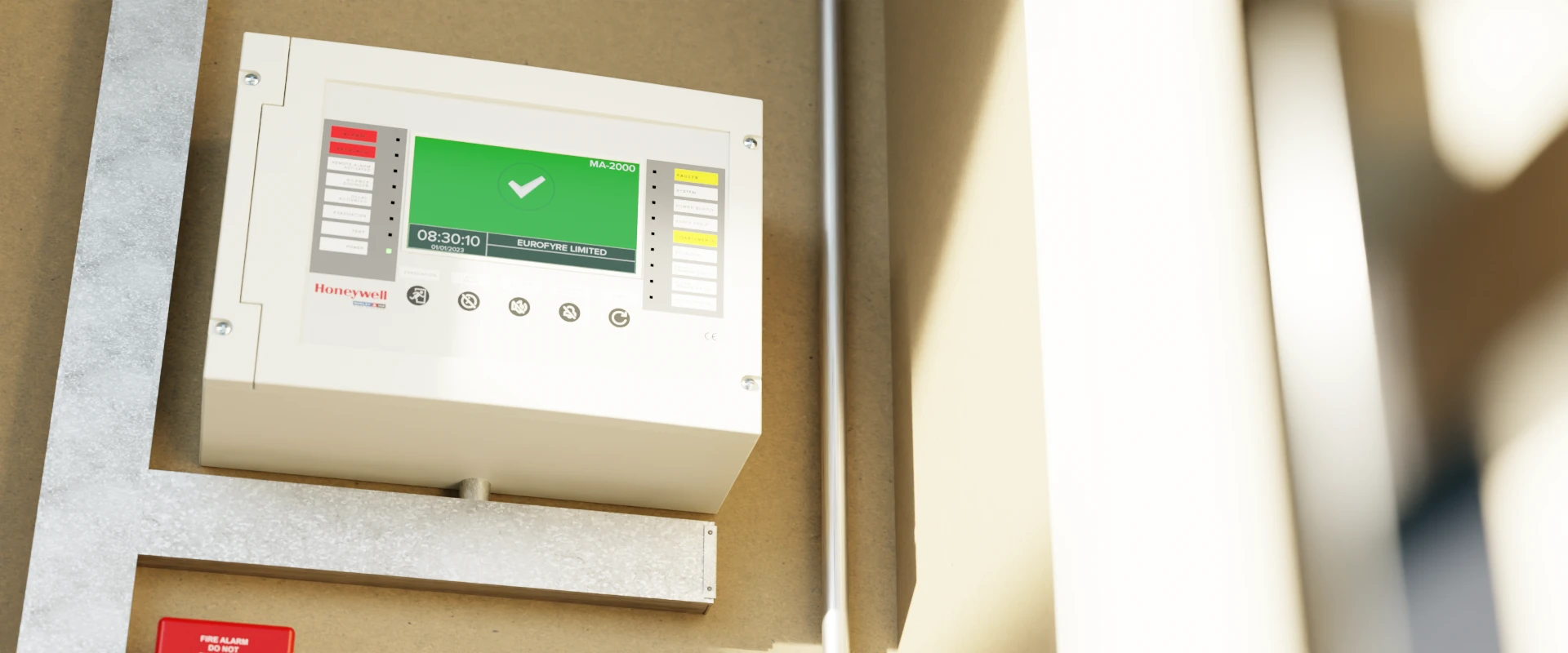
In healthcare facilities, Morley-IAS control panels are typically installed in secure, staffed locations such as main receptions, security offices or estates departments. These areas provide quick access for authorised personnel and emergency services while keeping the panel protected from tampering.
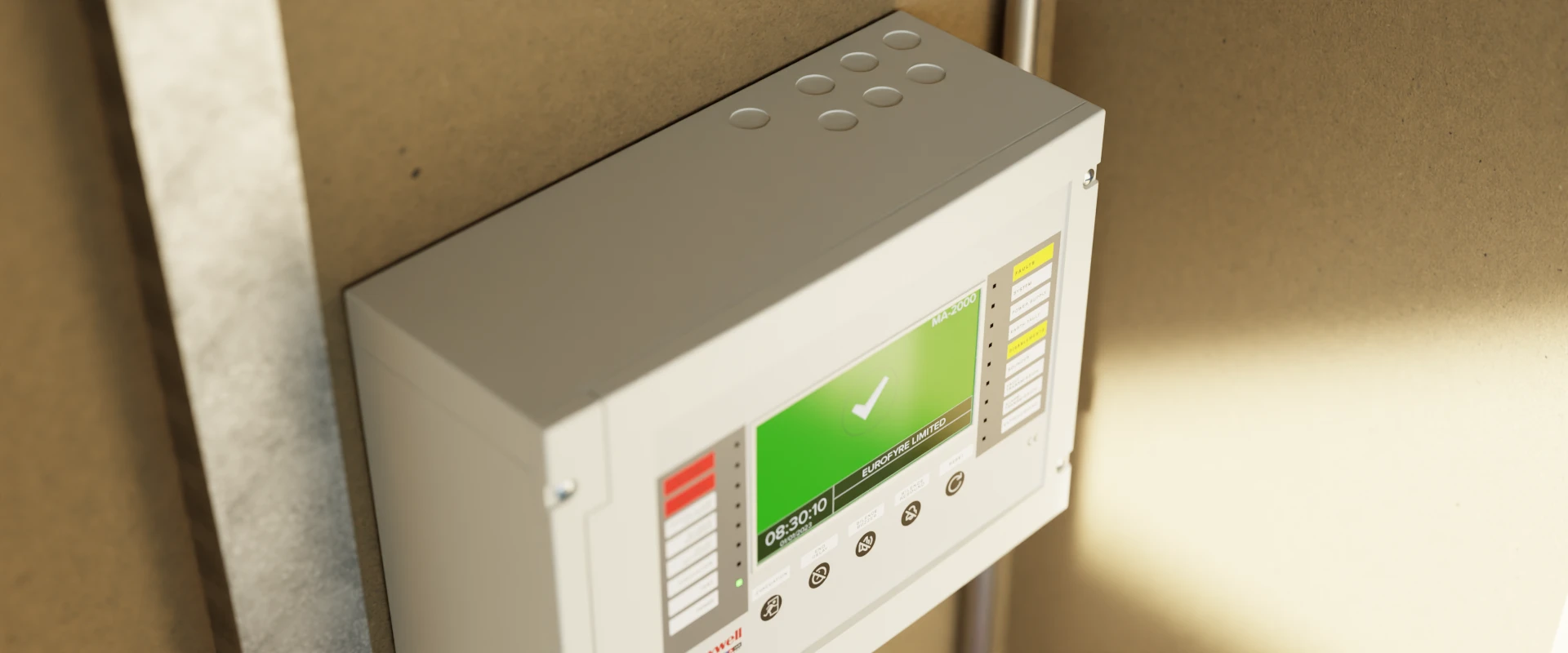
Detector Placement
Detector placement in healthcare facilities should cover all key risk areas, including patient rooms, corridors, plant rooms, kitchens and storage areas. Placement depends on room function, fire risk and airflow. Multi-sensor detectors are ideal in areas prone to false alarms, while heat detectors may be preferred in kitchens or laundry rooms. Proper zoning ensures accurate alarm localisation and response.
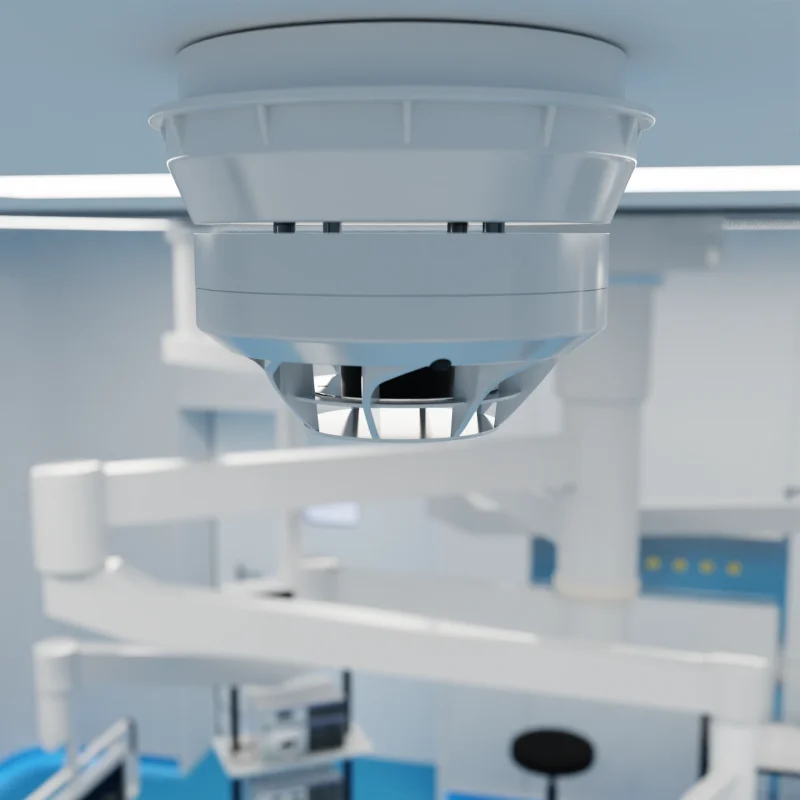
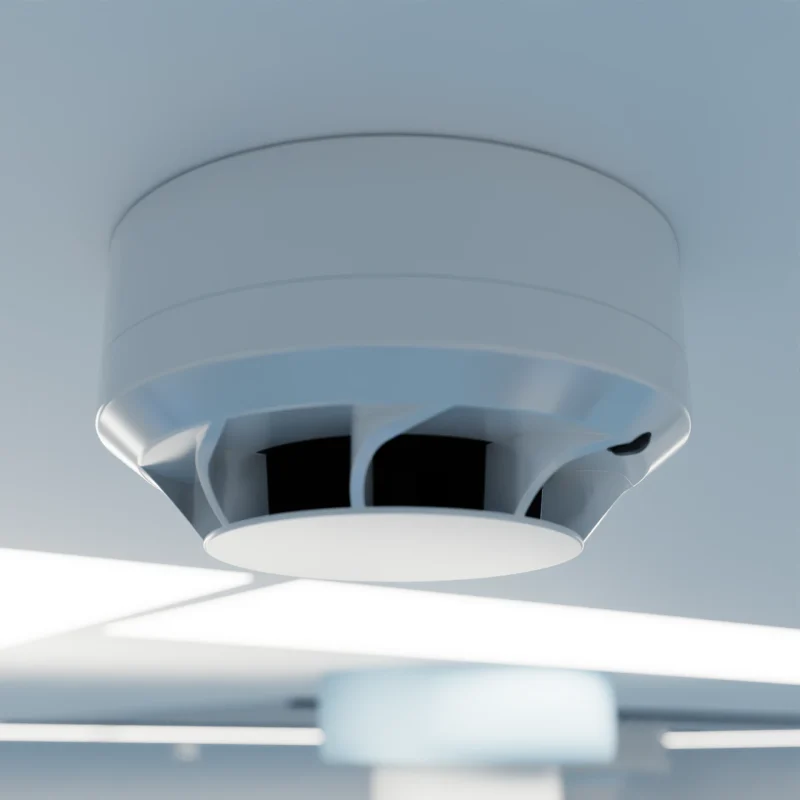
Wall Sounder Placement
Sounders in healthcare facilities should be placed along escape routes such as corridors, stairwells and near nurse stations to ensure clear audibility throughout the building. In patient areas, sounders may be supplemented with visual alarm devices (VADs). Placement should support phased evacuation strategies and comply with audibility requirements across all zones.


Manual Call Point Placement
Manual Call Points (MCPs) in healthcare settings should be installed at exits from wards, departments and public areas, as well as at all final exits from the building. They must be easily accessible, typically mounted 1.4 m from the floor, and positioned so staff or visitors can quickly raise the alarm while evacuating. Care should be taken to avoid placing them where accidental activation is likely.

Handpicked Solutions for Healthcare Facilities
Below is a selection of handpicked addressable fire detection components, each chosen for their reliability, compatibility with the Morley-IAS system, and suitability for healthcare environments.
Addressable Control Panel

The Morley-IAS Max Control Panel combines advanced technology with user-friendly features for maximum security and efficiency. This panel includes Honeywell’s innovative Advanced protocol which ensures fast, reliable detection of fire threats. Detailed information is provided to installers, allowing for streamlined troubleshooting and system maintenance.
Addressable Detectors
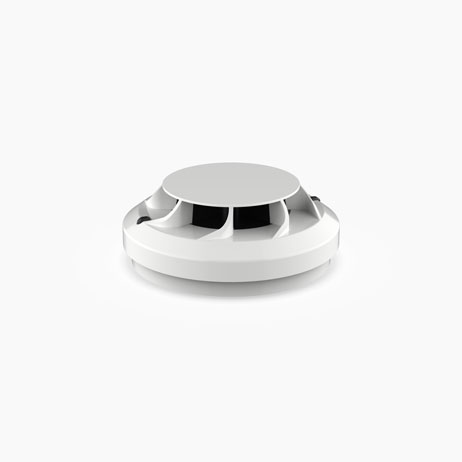
Morley-IAS Addressable Optical Smoke Detectors feature redesigned chambers for better responsiveness, minimising false alarms from dust and insects, and use advanced processing and algorithms to enhance detection accuracy and speed.
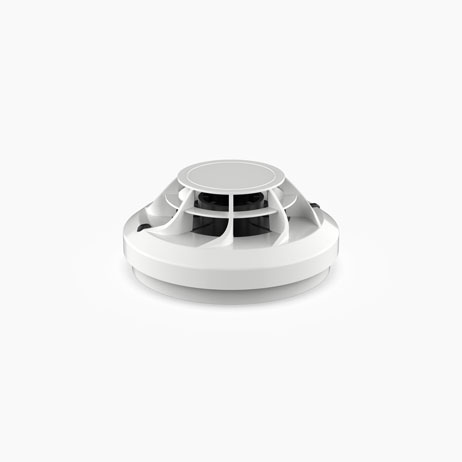
Morley-IAS Addressable Heat Detectors provide swift response using low mass thermistors and microprocessors. They offer fixed temperature detection or rate-of-rise detection with configurable settings, all in a sleek, modern enclosure.
Addressable Manual Call Point
Addressable Sounders
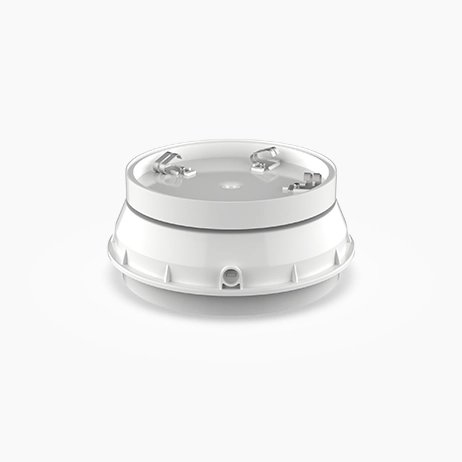
The Morley-IAS Addressable Base Sounder is a premium loop-powered device for emergency alerts. It uses the B501AP base for flexible installation and syncs with SS intelligent detectors, producing powerful, customisable audible warnings for diverse applications.
Addressable Interfaces
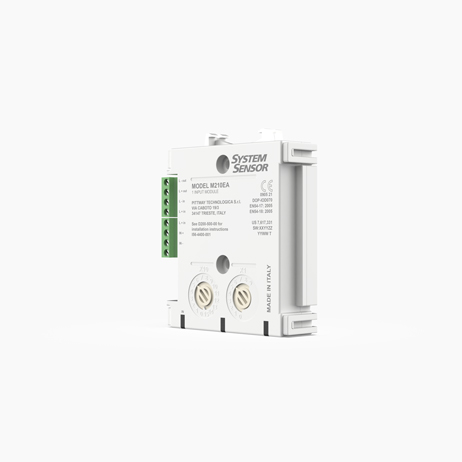
Morley-IAS Addressable Single Input Modules provide supervision of one input circuit. It offers both latched and analogue supervision. There are three separate latched states: normal; open circuit; and combined alarm/short. The analogue supervision continuously monitors the supervised circuit, returning a signal proportional to the circuit resistance.
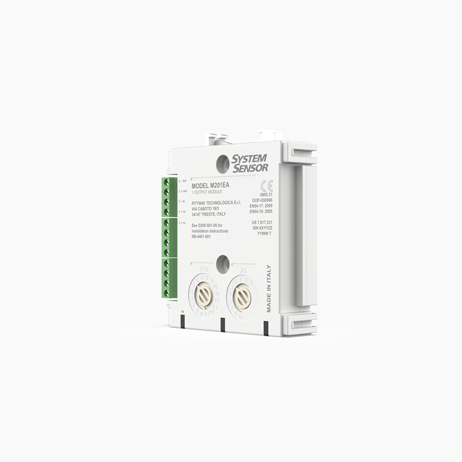
The Morley-IAS Addressable Single Output Module optionally supervises the wiring to the load devices and, upon command from the control panel, switches an external power supply to operate these devices.
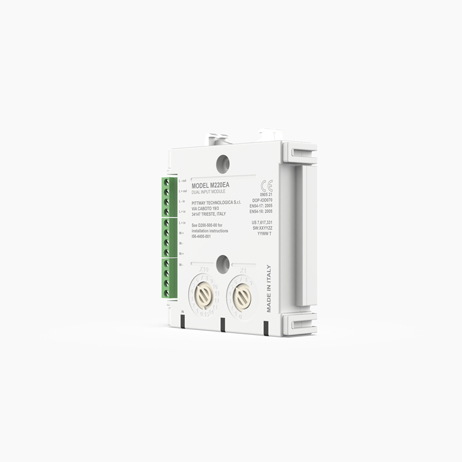
Morley-IAS Addressable Dual Input Modules are dual channel modules used for the monitoring of normally open contact fire alarm and supervisory devices.
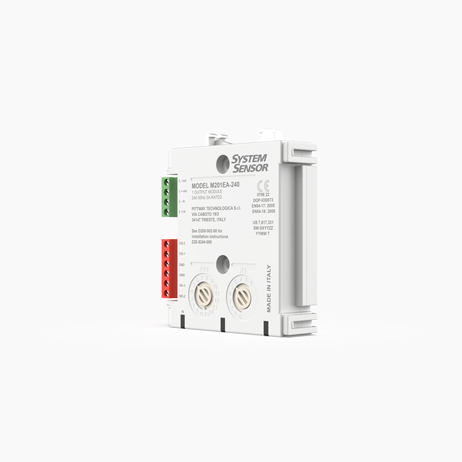
The Morley-IAS Addressable Mains Rated Output Module is a loop-powered device specifically designed to control an unsupervised double-pole output. This output module is capable of managing 240VAC loads. It consists of a bistable output relay that can latch in either the On or Off state upon receiving a command from the control panel.
Why Choose Eurofyre?
- Honeywell Fire Platinum Partner
- Eurofyre is a Honeywell Fire Platinum Partner. This means we can offer regional or industry-specific solution expertise that includes implementation and advanced customer support for models for Honeywell products along with the most competitive pricing.
- Complete System Supplier
- Eurofyre supplies all aspects of fire detection and its associated safety products, including addressable fire detection systems, and can provide expert advice and consultation.
- Demonstration and Training
- We offer demonstrations and expert training on a range of systems, including Morley-IAS, in our very own sophisticated training facility.
- After-Sales Support
- Eurofyre offers both on-site and telephone support to assist you in ensuring that your system is fully functional and operating at maximum efficiency. Our after-sales care and support are second to none.
For more information about Morley-IAS Max to discuss any of the other products that Eurofyre has to offer, please feel free to get in touch either by phone on +44 (0) 1329 835 024, by email to sales@eurofyre.co.uk or via the online enquiry form situated on our contact page.Don’t forget you can follow us on LinkedIn, Twitter and Facebook or sign up to our newsletter (in the footer below) to receive all the latest information.

